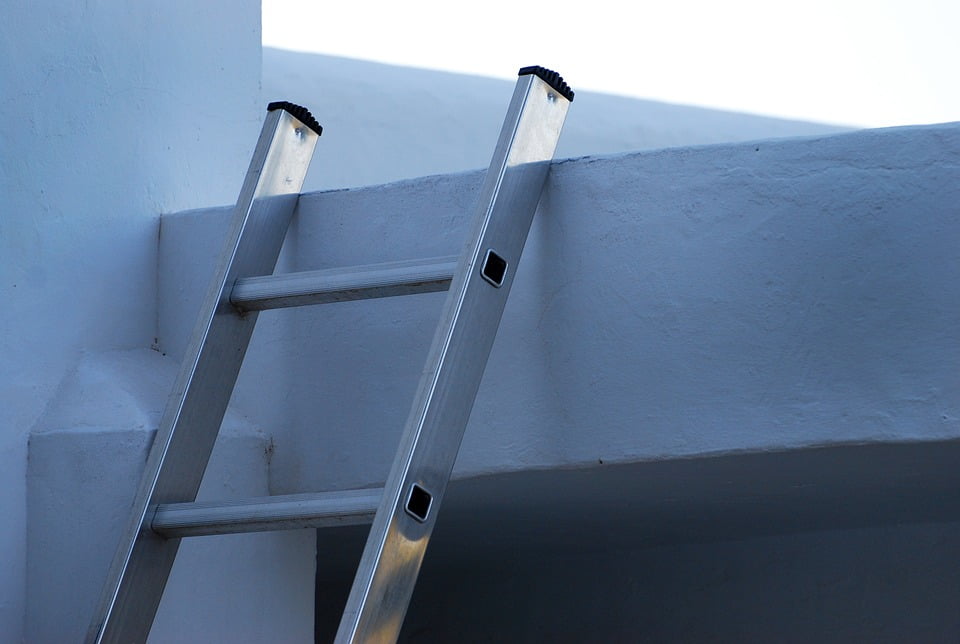Even if you’ve been using ladders for years, you still have to pay attention to safety and use the ladder in the most effective way to help you get the job done. Here’s our ultimate guide to ladder safety.
Ladder Safety: What ladder?
Choose the right ladder
This probably seems obvious, but choosing the most appropriate ladder for the job should be your first consideration. Do you not need to go too high? Is there nothing to lean a ladder on? A step ladder will probably be the ideal choice. But if you need to climb up high, to clean gutters, for example, an extension ladder would be more suited to the job.
Think about what height you’re going to be working at
All ladders have a maximum working height and this should be detailed on the ladder itself. This will help you choose the right ladder for your job too. Don’t ever exceed the maximum working height or you risk falling and serious injury.
Choose the right material
As well as choosing the right type of ladder, choose ladders made from materials that are suitable, taking into account any hazards you might be working close to. For example, if you are going to be working near any sources of electricity, you definitely shouldn’t be using metal ladders! Instead, opt for an insulated glass fibre ladder.
Always check your potential ladder safety issues
You should never start work if your ladder is not in decent condition. Look for any signs of breakage, cracks, rust, corrosion, or loose rungs. The rungs should not be dirty or greasy. Make sure that all of the metal parts are in good working order, including any wheels and locking mechanisms.
Ladder Safety: Using the ladder.
Set up the ladder correctly
Start as you mean to go on and set up your ladder correctly for use. For example, when you’re using a step ladder, the legs should be spread as far as they’ll go. Push the spreader bars between the legs down as far as they will go. If the ladder has a locking mechanism, make sure it’s secured.
If you’re using an extension ladder, a good rule of thumb is to follow the ‘4 to 1’ rule. This means that for every 4 feet of height, the base of the ladder should be 1 foot out from where it’s leaning. Another very important rule to remember when you’re using an extension ladder is that the locking mechanism which secures the extension in place, is fully locked. When you look at your ladder, there should be a latch on one side that attaches to the rungs on the other side. This stops the extension from sliding down when you use it, which could be pretty catastrophic.
Always make sure the ladder is level
Always place a ladder on an even surface. If it’s on a slight incline or mound of soil, for example, dig out some of the ground so you have a level surface. Never put anything under the ladder to make it level as this can cause instability.
Check that the ladder won’t slip
The feet of the ladder should have non-slip covers that stop the ladder from slipping during use. If your ladder doesn’t have them, you can buy ladder boots that will dig stop it from slipping along the ground.
Follow the rule of three
A good rule to keep you safe when you’re working on a ladder is to make sure that you are always making contact with the ladder in three places. This helps keep you steady and secure. For example, you should have both feet and one hand on the ladder or both hands and one foot.
Never carry anything when you’re on a ladder
Don’t carry tools or buckets in your hands when you’re going up a ladder, especially when working at a considerable height. Wear a tool belt or tie a rope to your bucket and secure it to your belt if need be.
Pay attention to the ladder’s maximum weight limit
Ladders have a maximum weight limit for a reason, manufacturers don’t set them for fun. As well as considering your own weight, think about tools and anything else that’s going to be going up the ladder with you.
Avoid the top of the ladder
Only climb as high as the third rung from the top. The higher rungs are not really made for standing on. Even if you’re tempted to try it because you need to reach that little bit further – don’t.
Ladder Safety: After use.
Consider your ladder safety after use
Make sure your ladder is stored away properly after use. If it’s left out, it could be stolen, damaged, or it could cause injury to someone else, particularly children.
Hopefully, we’ve given you some helpful tips on how to choose and use ladders safely, but if you’re still not sure which ladders you need for the job, contact our friendly sales team for advice, on 01684 252212 or at [email protected]. Want more information on safety or interesting tips? Check out the rest of our blog.




